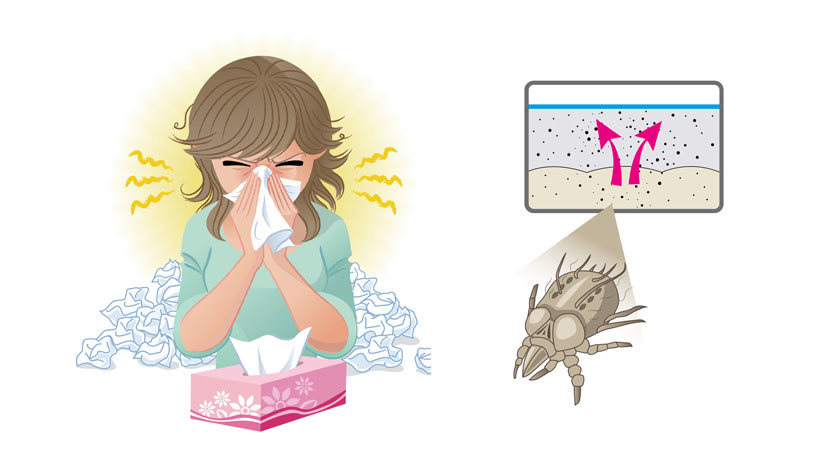Summer is in full effect – the sun is beating down, you’re making plans to get away and are, generally speaking, in a better mood this time of year. After all, your allergies are a thing of the past (aka last season). Or are they?
Spring may be over but if you’re still sneezing, sniffling or dabbing your eyes without showing any other signs of illness, you may be suffering from summer allergies. Here are four major factors that could be triggering this seasonal shift.
Weed or grass pollen
Pollen, also known as ‘hay fever’, is an allergy culprit for more than 25 million Americans. Though tree pollen is to blame in the spring months, weeds and grasses are the offenders come summer. They are known to produce small, light and dry pollen grains that can travel by wind for miles. While ragweed is the most common weed trigger, other highly allergenic species include sagebrush, pigweed, lamb’s quarters and tumbleweed. Grass pollen troublemakers include Bermuda, Johnson, Kentucky, Orchard, Redtop, Rye, Sweet Vernal and Timothy.
Smog overload
Air pollution is at its peak in the summertime, especially in urban areas. Smog is one form of it that’s particularly risky on hot days. According to the U.S. Environmental Protection Agency, inhaling smoggy air is hazardous as it contains bad ozone: gas formed at ground level when pollutants emitted from cars, power plants, chemical plants and refineries and other sources react chemically in the presence of sunlight. Bad ozone can cause a number of harmful respiratory health effects, even when we breathe it in at very low levels.
Stinging critters
While the warmer months lend way to more open-air activities, such as hiking, swimming in the lake or having a cookout, beware of pesky insects that can cause dangerous reactions when they sting. Bees, wasps, yellow jackets, hornets, fire ants and other insects can cause allergic reactions that can sometimes be life-threatening. Avoid drinking from open soda cans, wearing sweet-smelling perfume/cologne or walking barefoot in the grass: These habits practically invite bees and others to come your way.
Thriving bugs and bacteria
When the humidity and temperature are high, mold makes its way to moist areas like the basement or bathrooms, setting off an allergic reaction. Microscopic insects, called dust mites, also commonly nest in beds, fabric and carpets in these conditions and emit a residue that can warrant sneezes and wheezes.
To minimize your triggers:
– Vacuum regularly (and wear a mask when doing so)
– Stay inside when pollen count and smog levels are high
– Keep your windows and doors closed; run your air conditioner
– Use an air purifier if available
– Clean air filters in your home often, as well as other areas where pollen can collect
– Change your clothes and shower when you get home if you’ve been outside
– Wash bedding and rugs to minimize dust mites and other allergens
– Keep humidity at home to a maximum of 50 percent to ward off dust mites
If you think you might be a victim of summer allergies, confirm your suspicions with a medical professional and take the proper steps to get treated. Be sure to, however, seek immediate help in the event of a severe allergic reaction.
Sources:
https://www.zyrtec.com/allergy-guide/outdoor-allergies/weed-pollen-allergies
https://www3.epa.gov/airnow/health/smog.pdf
https://www.healthline.com/health/dangers-smog-what-you-need-know-about-air-pollution
https://www.webmd.com/allergies/grass-pollen-allergy#1
https://www.webmd.com/allergies/pollen_allergies_overview#2
https://www.webmd.com/allergies/summer-allergies#1



